Course:FNH200/2013w Team07 Yogurt
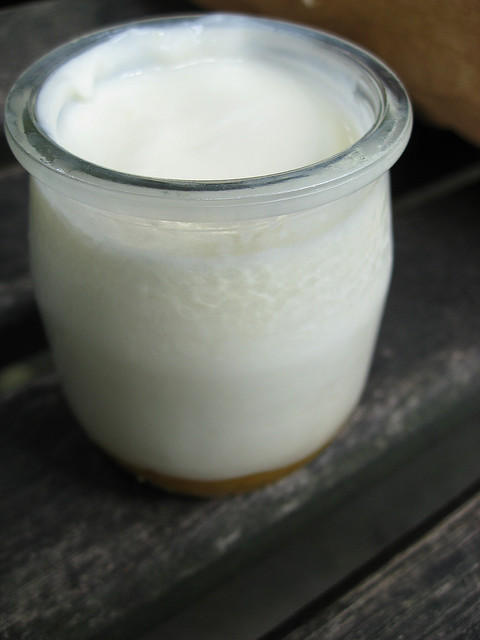
Yogurt Bacteria
Yogurt (also spelled yoghurt, or yoghourt) is a food product that is created using fermented milk, dating back to the Mesopotamia era in 5000BC when milk-producing animals were first domesticated. The type of milk most commonly used is cow's milk;however yogurt can be produced from all types of milk. The process of producing yogurt is specific and precise from the range of temperature used to the timing of each step. Alterations to yogurt procedures can greatly effect the outcome of the product, especially the fermentation step. Fermentation is due to bacterial starter cultures that are added to the milk. Depending on the variety of bacterial starter culture used, different variations of yogurt form in their texture, consistency, colour, aroma and taste. The two basic yogurt bacteria consists of Lactobacillus bulgaricus and Streptococcus thermophilus. Other bacterial cultures may be substituted or added to modify or improve this basic culture of yogurt.
How yogurt is made
In Western culture, yogurt is most commonly made by heating milk to about 80°C (or 176°F) in order to kill any undesirable bacteria pre-existing in the milk as well as to denature the milk proteins. The denaturing allows the milk proteins to coagulate to avoid forming any curds or lumps in the yogurt so that its consistency becomes uniform. Then the milk is cooled to about 45°C (or 112°F) before the bacterial starter culture is added. After the selected bacterial starter culture is well mixed into the milk, an optimum temperature adjusted to bacteria type is maintained for about 4 to 7 hours to allow fermentation to proceed. Once the yogurt reaches a state of solid foam, it can be removed from the incubation temperature and into refrigeration to be stored for at least another 8 hours at a temperature below 4°C (39°F).
Fermentation Process
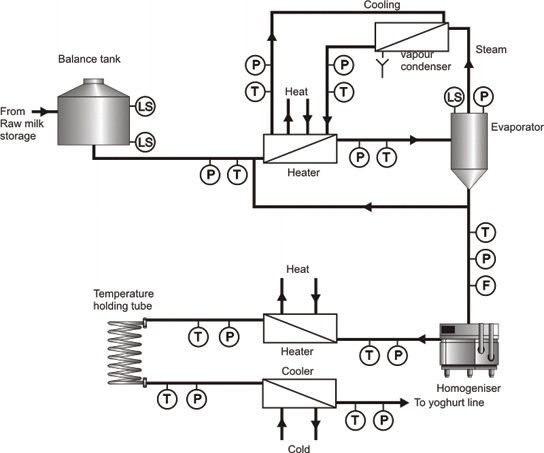
The fermentation process of the basic bacteria starter cultures, Lactobacillus bulgaricus and Streptococcus thermophilus, are inoculated with the milk in a jacketed fermentation tank for about 4 to 7 hours without any external disruption. Every yogurt bacteria has its own optimum fermentation temperature. For the two basic bacterias added to the milk in equal ratios, the temperature is maintained around 42°C to 45°C. The higher temperature (45°C) can increase the metabolism rate of the culture and cause the yogurt to be sweeter. This step of fermentation should be closely monitored as a lower temperature might not cause the optimum fermentation and too high of a temperature would cause enzymes to denature.
After 2 hours, as Streptococcus thermophilus grows faster, it releases lactic acid, carbon dioxide and formic acid. The release of which stimulates the growth of Lactobacillus bulgaricus. Together, the combination of Lactobacillus bulgaricus and Streptococcus thermophilus reduce the pH of the yogurt to 5. As a result, the growth of Lactobacillus bulgaricus continues while the growth Streptococcus thermophilus is inhibited by the presence of lactic acid. As Lactobacillus bulgaricus grows, it produces stimulatory peptides with amino acids that are used by Streptococcus thermophilus.
During the process of fermentation the yogurt mix is thickened. After 4 hours, the balance between the two cultures maintains equal concentrations. For this reason the end product will continue to maintain nearly equal amounts of Lactobacillus bulgaricus and Streptococcus thermophilus.
Once the fermentation process is ended the jacket is replaced with cold water so as to cool down the yogurt as well as to inhibit further fermentation and metabolic activity. Then the yogurt is stirred. At this point the product will have reached a pH between 4.2 and 4.3 with the lactic acid making up 1.2 to 1.4% of the yogurt. The product is then cooled to about 5°C to 22°C and then stored in a refrigerator (which is about 5°C).
The amount of time and temperature for fermentation varies by using different starter cultures. Yogurts using a single culture take up to 12 to 16 hours to complete fermentation. In contrast, mixed cultures take up to 3 to 4 hours, a third of the time it takes single cultures.
Variations of yogurt
There are numerous types of yogurt that vary by region. A few types commonly found in North America include flavored and sweetened (set type and Swiss style), pro-biotic, lactose-free, and Greek (strained) yogurts, as well as yogurts varying in fat content.
Types of yogurt
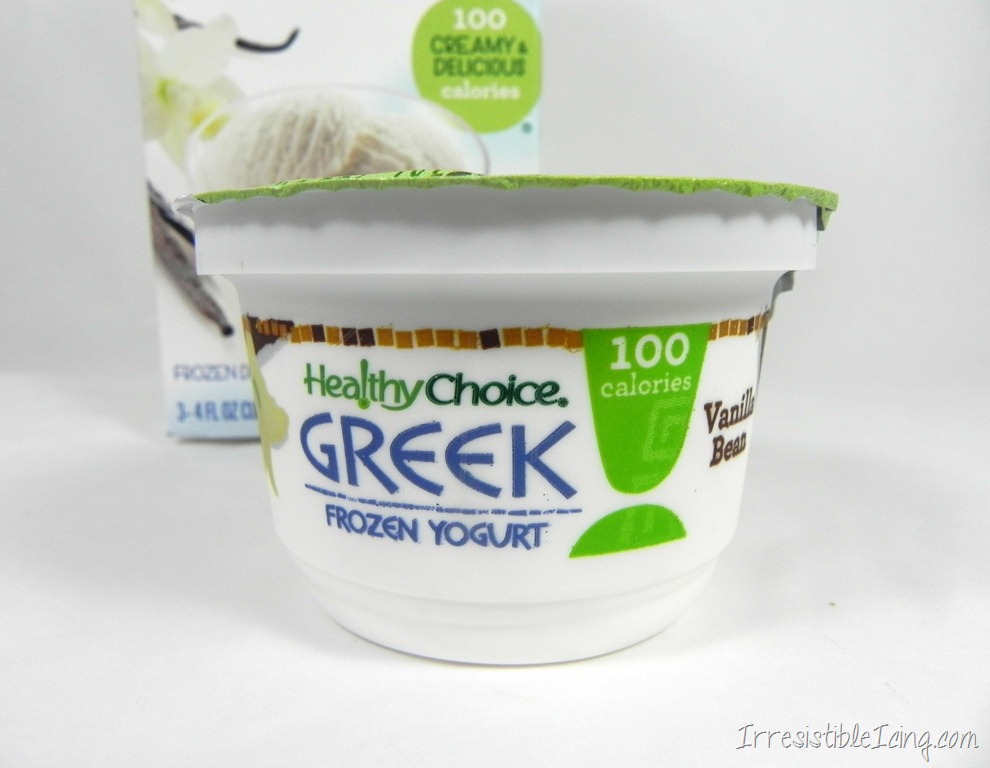
Flavored and sweetened yogurts have fruit and/or fruit jam added to them to offset the natural sour flavour of the yogurt and usually come in two varieties: set type and Swiss style. Set type is packaged with the fruit at the bottom so that it can be mixed in upon eating whereas Swiss style has the fruit mixed when packaged. These commercially sold sweetened yogurts often contain large amounts of sugar or sugar substitutes (for low-calorie yogurts). Some yogurts contain added starch, pectin, and/or gelatin to create thickness and creaminess artificially at lower cost.
Pro-biotic yogurt often have specific bacterial cultures additionally added to the basic starter cultures. This type of yogurt has been popularized with the advertisement claim of it aiding digestion.
Lactose-free yogurt is an option offered specifically for those who have a lactose-intolerance so that they don't have any adverse symptoms when consuming yogurt. Therefore lactase, an enzyme that breaks down lactose, is added into the yogurt to make it lactose-free.
Strained yogurt, commonly called “Greek yogurt” in North America has been strained through a paper or cloth filter, to remove the whey, giving a much thicker consistency and a distinctive, slightly tangy taste. It is the main component for tzatziki, a Greek dip made with grated cucumber, olive oil, salt and, mashed garlic (optional).
Bacteria found in yogurt
Bifidobacterium lactis

Bifidobacterium lactis is an anaerobic and irregular rod-shaped bacteria, which turns glucose into lactic acid and acetic acid. This bacteria normally lives in Gastrointestinal tract, but they also exist in different locations. For instance, this probiotic bacteria along with many types of antibodies are contained within the breast milk of pregnant women. Bifidobacterium lactis benefits our health by increasing secretion of the IgA antibody, which prevents gastrointestinal and respiratory tract infections. In addition, this probiotic is beneficial to metabolism as it lowers LDL-cholesterol in patients with type II diabetes. This microorganism also improves the glucose tolerance in pregnant women.
Lactobacillus delbrueckii subsp. bulgaricus

Lactobacillus delbrueckii subsp. bulgaricus is member of the Lactobacillus genus of bacteria, which is non-pathogenic and probiotic bacteria. This bacteria breaks down sugars into lactic acid, which lowers the pH of milk and causes the protein to coagulate. L. bulgaricus has an optimum temperature range of 40-50 degrees celcius. Lactic acid gives tarter taste and acts as preservative. Along with Salivarius ssp. thermophilus is commonly used as a starter for various production of fermented products, such as yogurt, cheese and milk. There are no risk and potential harms have yet been found to be associated with this bacterium. Moreover, this Lactobacillus delbrueckii subsp. bulgaricus aids in digestion of lactose for lactose intolerant individuals. Thus, it improves the digestion. Current researches has illustrated that this probiotic bacterium aids in spleen cell proliferation. Overall, Lactobacillus delbrueckii subsp. bulgaricus plays a critical feature in yogurt production, and there are no hard or potential harm been found to be associated with this bacteria.
Acetobacter orientalis
Acetobacter orientalis is member of acetic acid genus of the aerobic bacteria, also a probiotic bacteria. Within this genus they all commonly convert ethanol to acetic acid in presence of oxygen. There are several species under this genus, and their risks and potential harm are assumed to be similar. Based on hazard assessment done on, Acetobacter Aceti, specie is concluded that these genera have not demonstrated any sign of sign of risks at normal level of existence. However, with extreme exposure to these bacteria is expected to develop allergic or immunological reaction. Therefore the potential hazard of Acetobacter bacteria happen when an individual is contaminated with high concentration of these bacteria. This group of bacteria is commonly used by humans mostly for production of vinegar, and beer. Acetobacter orientalis, is used in Caucasian “Caspian sea” yogurts for production of lactobionic acid from ethanol. Acetobacteria, are very common and are found on both human’s body and surrounding environment, therefore there are a lot interaction between humans and them. The digestion of this bacteria is understood to be ordinary at normal level of intakes. Acetobacteria has several positive effects on humans. For instance, it aid in preventing the digestive system from urinary tract and yeast infection. Also, aids in relief of the constipation. Moreover, it prevents pathogenic bacteria from entering into the bloodstream. Overall, Acetobacter bacteria has a positive impact on human’s health.
Streptococcus thermophilus
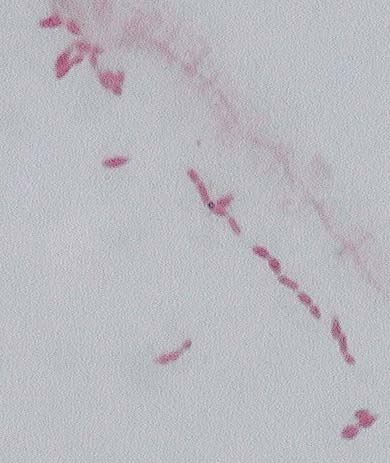
Streptococcus thermophilus is found mostly in milk and provides folic acid, which aids in breaking the lactose to produce lactic acid. It lowers the pH of the milk and causing the protein to coagulate. This bacteria produces the basic yogurt, thus is found in all types of yogurt. Streptococcus thermophilus is found to be sensitive to antibiotics (i.e penicillin in milk) and sodium chloride, and found ideally under 45°C. This bacteria is beneficial for child development, lowering the probability of lung cancer, and promoting gastrointestinal health. Moreover, by law, in order to be sold as “yogurt,” a product must include this bacteria strain.
Lactobacillus acidophilus
Lactobacillus acidophilus is a member of the Lactobacillus genus of bacteria. These non-pathogenic and probiotic bacteria are found in the mouth, intestine, and vagina. It can tolerate temperature up to 37°C. Their main function is to break down the sugars into lactic acid. Lactic acid gives tarter taste and acts as preservative. L. acidophilus occurs naturally in the human digestive system and other parts of the body. They are used in in various dairy product, fermented soy products like miso and tempeh. Based on gathered information Lactobacillus acidophilus will not cause any digestion problems. Thus, the digestion of this bacterium is considered to be ordinary. Lactobacillus acid has both benefits and side effects on human body. Is been understood that this bacteria will treat the vaginal infections. Moreover, there are various other treatments which this bacterium is used which are not fully proven, such as high cholesterol. Side effects are easily avoidable by not taking L. acidophilus by mouth for those who are experiencing intestinal damage, immune problem, and overgrowth of bacteria in their intestines. Overall, this probiotic bacterium has more advantages, and its few disadvantages are avoidable with safe practices.
Lactococcus lactis subsp. cremoris
Lactococcus lactis subsp. cremoris is a variety of lactococci that has a pronounced ability to develop flavor in the foods it ferments. This bacteria ideally lives under 22°C temperature, however is able to survive any temperature between 8 to 37 degree Celsius. It digests lactose and produces lactic acid, lowering the pH of milk and allowing the milk protein to coagulate. It produces a characteristic gel-like polysaccharide that is typical of viili yogurt. This bacteria it aids in digestion of lactose-intolerant individuals. Also, there are no known harm or effect caused by it or any microorganisms that goes in combination with.
Lactococcus lactis
Lactococcus lactis digests lactose and produces lactic acid, lowering the pH of milk and allowing the milk protein to coagulate. It can also be used to ferment vegetables and grains as well as non-dairy milks. This bacteria optimally lives under 30°C temperature, but is able to survive within various temperatures, 8 to 40 degree celsius. Lactococcus lactis is present is all types of yogurts. Also, it helps digestions of those with lactose-intolerance. Based on current researches, Lactococcus lactis is not symbiotically active with another bacteria, nor any harmful impacts have been detected.
Lactococcus lactis subsp. lactis biovar. diacetylactis
Lactococcus lactis subsp. lactis biovar. diacetylactis digests lactose and produces lactic acid, lowering the pH of milk and allowing the milk protein to coagulate. It has a tendency to dominate over other lactococci. This bacteria produces a characteristic buttery flavor and aroma in the milk products it ferments. It can survive in any temperature between 8 to 40°C, but optimally lives in temperature range of 22-28°C. This bacteria does not go in combination with any other microorganism, and is present in all types of yogurts. Similar to other Lactococcus bacterias, there are no known harmful impacts and it aids in digestion of those with lactose-intolerance.
Leuconostoc mesenteroides
Leuconostoc mesenteroides is a mesophilic bacteria strain known for producing a sour taste and a gel-like texture. It’s generally found on crop plants, and can also be used to ferment vegetables. It also speeds up the process of acidification in milk and promotes an anaerobic (no oxygen) environment, which inhibits pathogenic bacteria.This bacteria is present in all types of yogurt. (Leuconostoc mesenteroides subsp. cremoris is a mesophilic bacteria strain that is often used to produce aroma during the culturing process.)
S. lactis var. bollandicus
S. lactis var. bollandicus together with S. taette is used to make piima, a cultured milk that is often considered to be a type of yogurt and are attributed to the sour flavor in yogurt. S. taette also produces slime and a viscous texture in yogurt, which aid in the consistency of yogurt.
Lactic acid bacteria
Lactic acid bacteria, are gram positive and mostly found under anaerobic conditions. These bacteria ferment carbohydrates to lactic acid via two different pathways, hemo-fermentation and hetero-fermentation. And each pathway results various different products.
Precaution
Yogurt is full of nutritional value such as protein, calcium, riboflavin, vitamin B6 and vitamin B12. It can also be found with different percentages of fat content allowing it to suit a number of peoples' dietary needs and preferences. The yogurt fat and protein content is the same as the milk used to make it. For this reason there is non-fat (0% fat), low-fat (usually 2% fat) and plain or whole milk (4% fat) yogurts.
Though yogurt is nutritional source it may have added value as health food for both infants and seniors . For children, it is a balanced source of protein, fats, carbohydrates, and minerals. For seniors, who usually have more sensitive colons or whose intestines have run out of lactase, yogurt is also a valuable food since it can often still be consumed by them. In this way yogurt may help prevent osteoporosis and reduce the risk of high blood pressure. Also yogurts with active cultures helps the gut and may discourage vaginal infections.
Lactose-intolerance
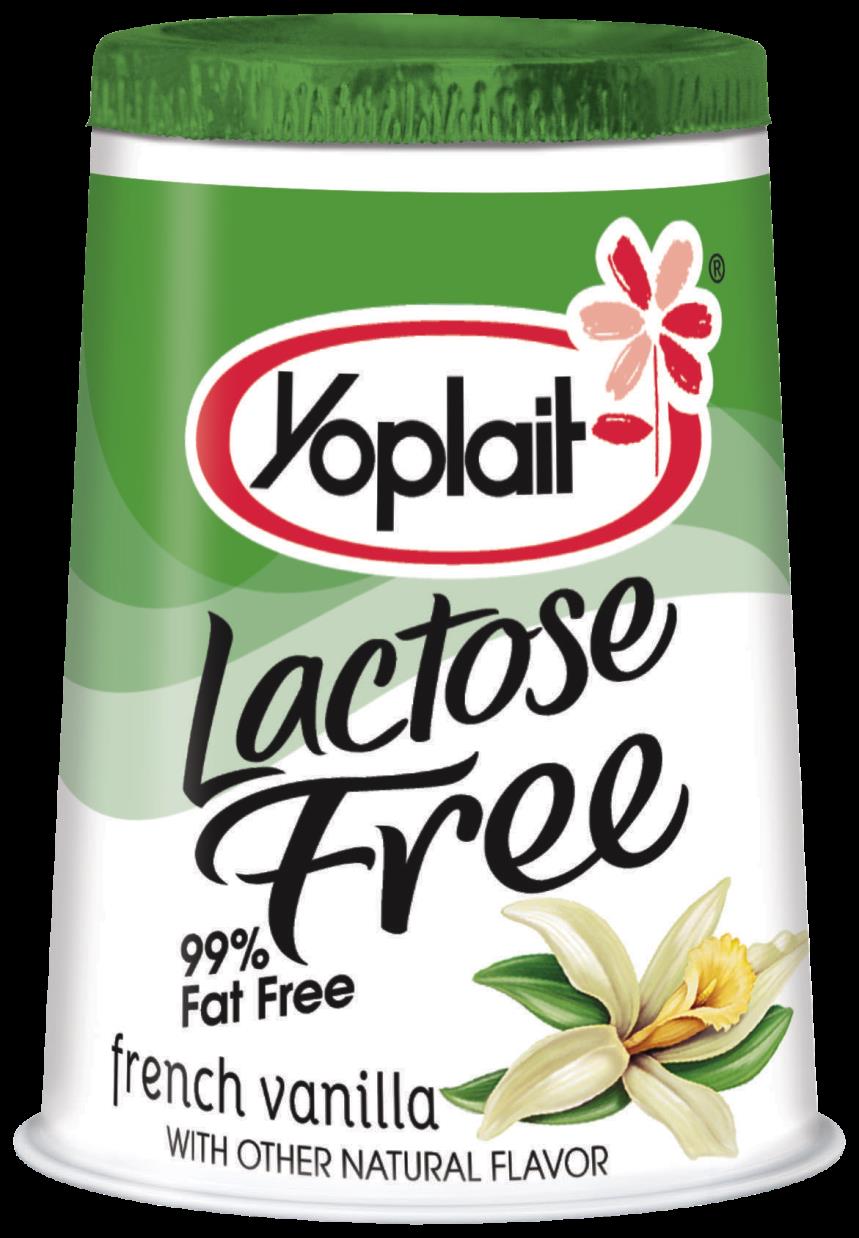
Those who are lactose-intolerant may have trouble digesting lactose (the sugar found in milk), as such they might feel uncomfortable consuming milk products such as yogurt. The cause of lactose-intolerance is usually a lactase deficiency. Those with lactase deficiency produce less lactase (the enzyme that breaks down lactose) over time and lead to symptoms of abdominal pain, abdominal bloating, gas, diarrhea, and nausea. Many people don't produce adequate amounts of lactase and therefor can be considered lactose-intolerant.
While ingesting yogurt can induce these symptoms yogurt made with active and live bacterial cultures are often better for people with lactose-intolerance. When this type of yogurt enter the intestine, the bacterial cultures convert lactose to lactic acid, so the yogurt will have a lesser lactose content than yogurt without live cultures, making it often more tolerable for lactose-intolerance individuals.
Other yogurts that may be options for lactose-intolerant individuals are Greek yogurt and lactose-free yogurt. Greek yogurts may be more tolerable because manufacturers strain it and straining removes some of the lactose. A safer bet for those that want to avoid lactose all together would be lactose-free yogurt which has lactase added to the yogurt to break down the lactose.
Interesting facts about yogurt
1. Yogurt can function as a metal cleaner. The lactic acid found in yogurt cleans the tarnish in metal furniture.
2. The bacteria found in yogurt are the good bacteria that is beneficial towards the digestive systems. Lactic acid found in yogurt also helps the digestive system increases its absorption of minerals in the digestive systems.
3. These good bacteria also helps to boost your immune system by fighting the infection in white blood cells.
4. Yogurt contains special proteins that helps to lower blood pressure.
5. The calcium and vitamin D content in yogurt can also have beneficial effect towards the bone in our body. It helps to prevent osteoporosis.
Regulations on yogurt bacteria
To help consumers differentiate between yogurts that have undergone post-fermentation heat treatment to kill off any live cultures The National Yogurt Association in the United States established a “Live Active Culture”. This seal states that refrigerated yogurt must contain 108 viable lactic acid bacteria per gram at the time of manufacturing. However, since the seal does not differentiate between the probiotic bacteria and the starter culture, it can't be used to determine if adequate amount of probiotic bacteria were added. Therefor the levels of each microbe present don't need to individually meet the standard, as the standard, as the standard relates to the total number of live cultures.
Reflections
Throughout our research project on yogurt bacteria, we have gained an immense amount of knowledge on the role of starter cultures in the formation of yogurt. With our enhanced understanding, we can further appreciate our yogurt-eating experiences in everyday life. We also know different benefits that yogurt has and how it prevents harmful microbial growth. Since we also had hands-on experience of making yogurt with starter culture and probiotic bacteria, we now realize that yogurt bacteria are sensitive to temperature ranges in fermentation. For instance, small variations of time and temperature can change the outcome of the product. This overall experience will help us in the future choice and consumption of yogurt.
Group Project Video
Exam Question
During the process of fermentation, as _______________________ grows faster, it releases lactic acid, carbon dioxide and formic acid, stimulating the growth of _______________________.
A. Lactobacillus bulgaricus; Streptococcus thermophilus
B. Lactobacillus bulgaricus; Lactobacillus acidophilus
C. Streptococcus thermophilus; Lactobacillus bulgaricus
D. Streptococcus thermophilus; Lactobacillus acidophilus
Answer: C
References
Adams, Martin R., and M. O. Moss. Food Microbiology. 3rd ed. Cambridge: Royal Society of Chemistry, 2000. Print.
Barrie, Leslie. "4 Surprising Health Benefits of Yogurt." - Health.com. Health Magazine, n.d. Web. 01 Apr. 2014. <http://www.health.com/health/gallery/0%2C%2C20532821%2C00.html>.
Dr. Sears. "10 Reasons Yogurt Is a Top Health Food." The Trusted Resource for Parents. Ask Dr Sears, n.d. Web. 01 Apr. 2014. <http://www.askdrsears.com/topics/feeding-eating/family-nutrition/yogurt/10-reasons-yogurt-top-health-food>.
http://en.wikipedia.org/wiki/Yogurt
http://en.wiktionary.org/wiki/piim%C3%A4
Foster, Edwin M. Dairy Microbiology. Englewood Cliffs, NJ: Prentice-Hall, 1957. Print.
Frank, Hanns K. Dictionary of Food Microbiology. Hamburg: Behr's, 1992. Print.
Kabeerdoss Et Al. "Effect of Yoghurt Containing Bifidobacterium Lactis Bb12® on Faecal Excretion of Secretory Immunoglobulin A and Human Beta-defensin 2 in Healthy Adult Volunteers." Nutrition Journal. Biomed Central Ltd., 23 Dec. 2011. Web. 01 Apr. 2014. <http://www.nutritionj.com/content/10/1/138>.
Magee, Elaine. "Yogurt Benefits, Health & Nutrition Facts, & More." RDWebMD Weight Loss Clinic-Feature. WebMD, n.d. Web. 01 Apr. 2014. <http://www.webmd.com/diet/features/benefits-of-yogurt>.
"Products with Probiotics." California Dairy Research Foundation. N.p., 2011. Web. 01 Apr. 2014. <http://cdrf.org/home/checkoff-investments/usprobiotics/products-with-probiotics/>.
Robin, Suzanne. "Healthy Eating." Healthy Eating. N.p., n.d. Web. 01 Apr. 2014. <http://healthyeating.sfgate.com/greek-yogurt-cause-lactose-intolerance-3102.html>.
Sibley, Eric, Rachael Fisher, and Jean Pennington. "National Digestive Diseases Information Clearinghouse (NDDIC)." Lactose Intolerance. NIN Publication, 23 Apr. 2012. Web. 28 Mar. 2014. <http://digestive.niddk.nih.gov/ddiseases/pubs/lactoseintolerance/>.
Tamang, Jyoti Prakash., and Kasipathy Kailasapathy. Fermented Foods and Beverages of the World. Boca Raton: CRC/Taylor & Francis, 2010. Print.
Todar, Kenneth. "Lactic Acid Bacteria." Lactic Acid Bacteria. N.p., n.d. Web. 27 Mar. 2014. <http://textbookofbacteriology.net/lactics_3.html>.
"What Is Yogurt?" Cultures for Health: Yogurt Starter, Sourdough Starter, Kombucha, Kefir Grains, Cheese Making and More. N.p., n.d. Web. 01 Apr. 2014. <http://www.culturesforhealth.com/what-is-yogurt-history>.
http://en.wikipedia.org/wiki/Streptococcus_thermophilus
Yildiz, Fatih. Development and Manufacture of Yogurt and Other Functional Dairy Products. Boca Raton, FL: CRC/Taylor & Francis, 2010. Print.
|
|